Home → Conservatories → Different Types of Conservatories
With so many conservatory types available these days, it can be a little tricky working out which one is perfect for your home. Luckily, KLG Rutland has over 50 years’ experience designing, manufacturing and installing conservatories in the Nottingham and Derby area, so we’re in a great place to help you make an informed buying decision.
This guide will take you through all the different types of conservatories available here, explaining the pros and cons of each, and offering advice on what type of property each conservatory would suit.
Types of Conservatories at KLG Rutland
The main types of conservatories available in the UK today are:
- Victorian Conservatories
- Edwardian Conservatories
- Lean-To Conservatories
- Gable-Fronted Conservatories
- Double-Hipped Conservatories
- Combination Style Conservatories
- Orangeries
Victorian Conservatories
A Victorian Conservatory is possibly the most traditional type of conservatory style and is likely what you’d picture if you closed your eyes and imagined a conservatory. They tend to comprise a steep apex roof with ornate detailing on top, while the overall shape is rounded with either a three facet or five facet design (a bay-style front with either three or five main windows). Due to their classic design, Victorian conservatories are most-suited to older properties rather than new builds, but our experienced designers can develop Victorian conservatories for any home.
Check out our Victorian Conservatory options here.
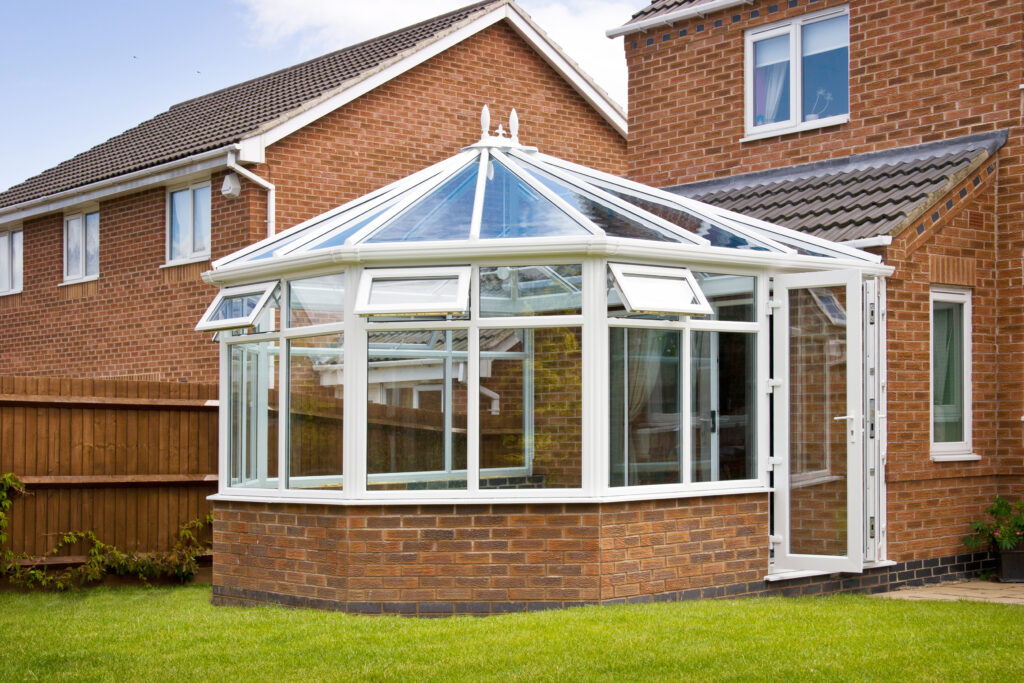
Edwardian Conservatories
An Edwardian Conservatory, sometimes called a Georgian Conservatory, is a classy-looking conservatory that is square or rectangular in shape, maximising the amount of usable space available inside. The design also focuses on allowing as much light as possible into the conservatory with a high, sloping roof that’s inspired by ancient Greek and Roman architecture. There are similarities with Victorian conservatories, but the clean lines of Edwardian conservatories mean they’re suited to both modern and older properties.
Check out our Edwardian Conservatory options here.
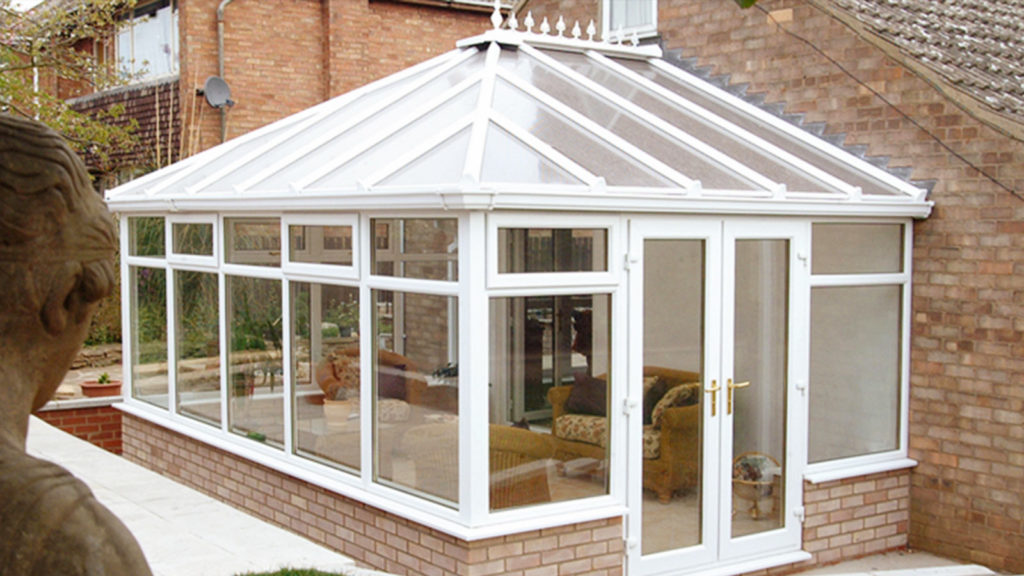
Lean-To Conservatories
Smaller than a lot of conservatories, lean-to conservatories offer an extremely cost-effective way to extend a home with limited space or low eaves. They feature a low sloping roof, sitting atop a box-shaped construction, similar to traditional ‘sunroom’ designs from the Mediterranean. Traditionally, lean-to conservatories are the best choice for bungalows, but they can make a striking addition to any property, significantly extending a home’s livable space.
Check out our Lean-To Conservatory options here.
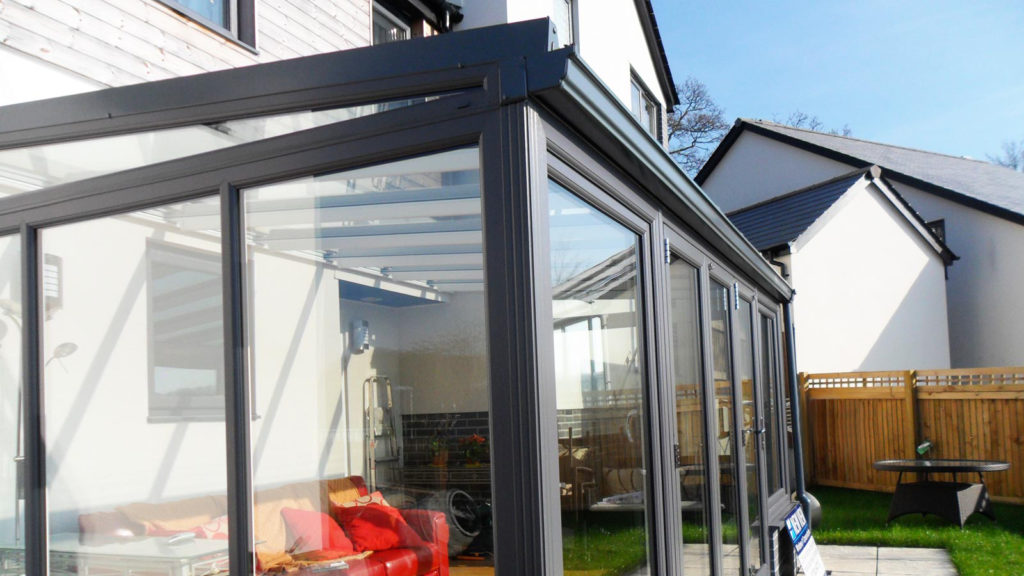
Gable-Fronted Conservatories
A gable-fronted, gable-end or simply ‘gable conservatory’ is one which provides a grand aesthetic with windows reaching the full height of the gable roof apex. It has the rectangular shape of an Edwardian style conservatory but the flat gable front creates a striking visual impact and allows even more light into the space. Due to the high reach of a gable conservatory’s roof, they are suitable for larger properties both traditional and modern.
Check out our Gable-Fronted Conservatory options here.
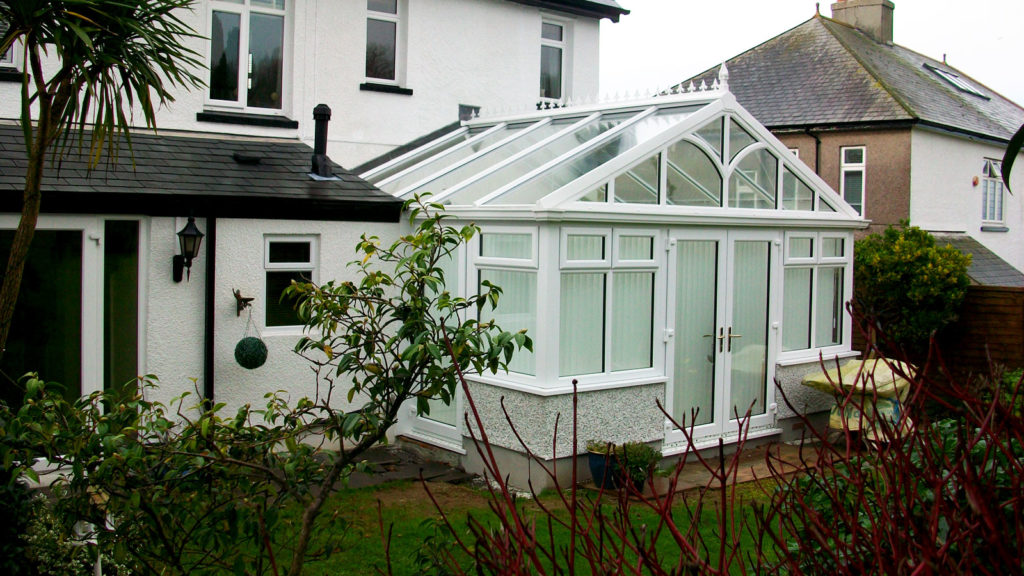
Double-Hipped Conservatories
A double-hipped conservatory has a pitched roof on either side of the construction, lowering the overall height of the room and making them suitable for all properties. The double-hipped roof is often accommodated as a part of an Edwardian conservatory to suit height-restricted homes. A lantern roof like this provides pure elegance and all the light you could ever desire, making double-hipped a popular element of many conservatory designs.
Check out our Double-Hipped Conservatory options here.
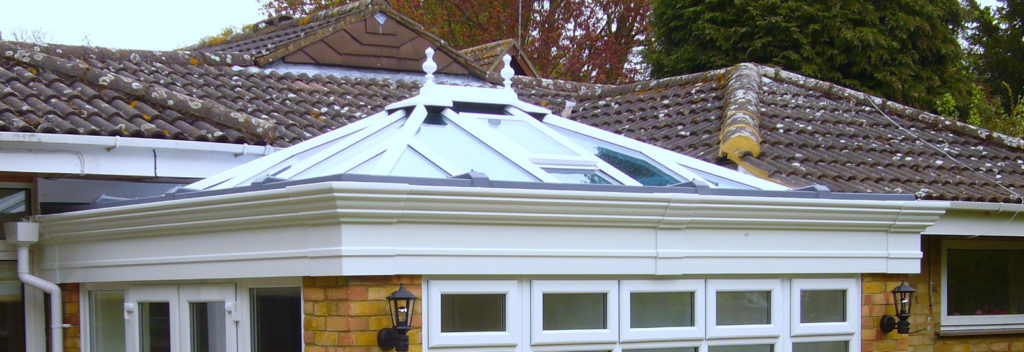
Combination Style Conservatories
A combination style conservatory is just what you’d expect it to be – it’s a conservatory that borrows style and design features from more than one traditional conservatory type. They are custom-designed to the specific requirements of your property and your individual desires, incorporating elements from any of the conservatory styles listed above. We regularly design combination conservatories in P, B, T or L shapes, providing bespoke solutions that perfectly suit the property. Flexibility is the name of the game when it comes to combination style conservatories.
Check out our Combination Style Conservatory options here.
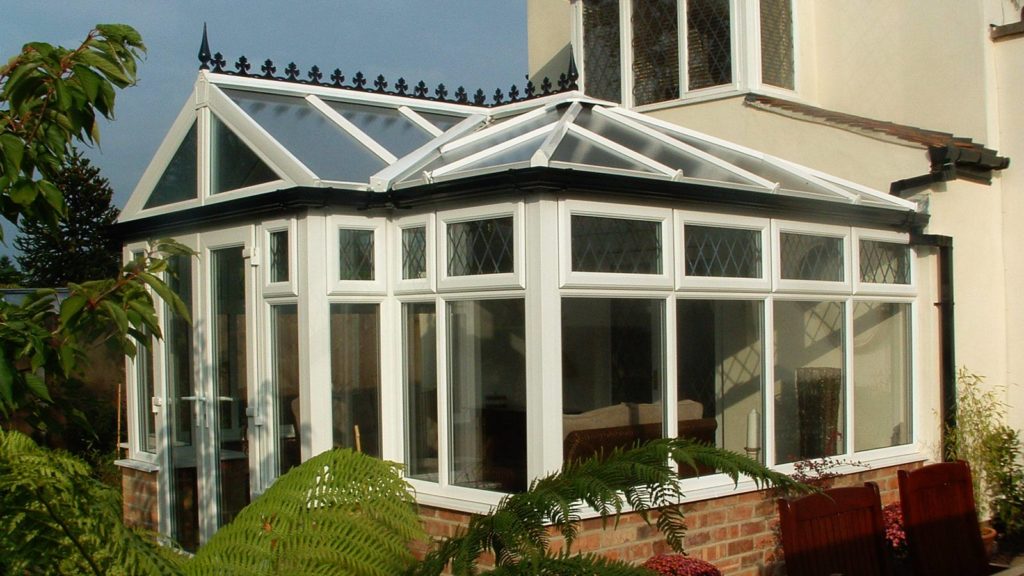
Orangeries
While not strictly a conservatory, orangeries certainly deserve their spot on our guide to all the different types of conservatories. They differ from conservatories in that they are mainly brick structures with partly plastered ceilings, offering the light you want from a conservatory through large windows to the sides and roof. Over time, the lines between orangeries and conservatories have become blurred and they can be custom-designed to suit the needs of any property.
Check out our Orangery options here.
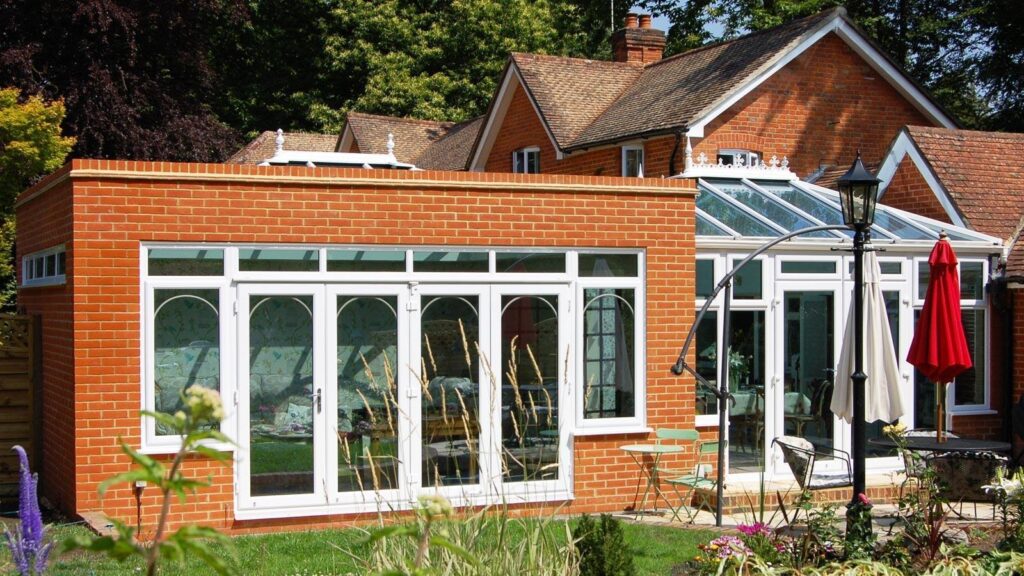
Types of Conservatory Roofs
Aside from the various overall styles of conservatories, there are also different types of conservatory roofs that are worth considering. Now that tiled roof systems comply with building regulations, more people are turning to them as a thermally-efficient solution for their conservatory.
The main conservatory roof types available in the UK are:
- Glass roofs
- Tiled roofs
- Polycarbonate roofs
- Hybrid solid roofs
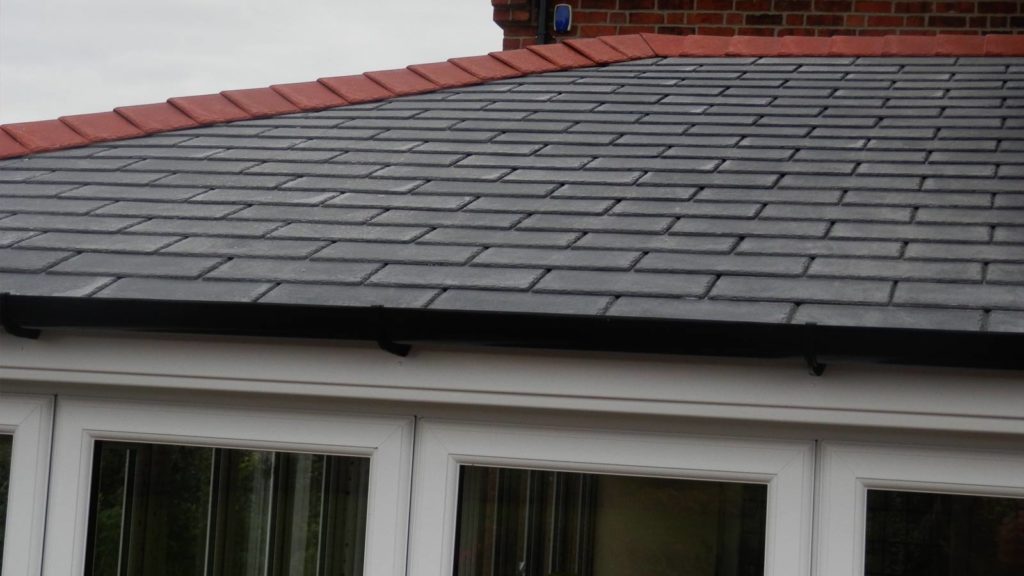
Glass Roofs
Glass roofs are perhaps the most common conservatory roof types and the most traditional. Crafted from various glazing bars combined together to support window panes, the main benefit of a glass roof is the sheer amount of light they allow into a room.
Tiled Roofs
Tiled roofs for conservatories are becoming incredibly popular, solving the issue of glass and polycarbonate roofs making conservatories sometimes too hot in summer and too cold in winter. New conservatories can be built with tiled roofs or we can fit a fully-insulated, lightweight tiled roof to an old conservatory to ensure that space is used all year round. Many homeowners are reaping the benefits of a tiled roof replacement and you can too!
Polycarbonate Roofs
Many older conservatories will have a polycarbonate roof due to their low installation costs but they have a shorter lifespan than other roof types. The roofs are made up of layered sheets of transparent polycarbonate, separated by tunnels that trap warm air to try and keep it within the room during the winter. Of course, the drawback of this is that polycarbonate roof conservatories are very warm in summer.
Hybrid Solid Roofs
Hybrid solid roof conservatories are rarer but still worth mentioning in this guide. Usually crafted from insulated aluminium and glass window panes, hybrid roofs allow light through glazed panels in an otherwise solid roof, finding a happy medium between the insulation of a tiled roof and the light of a glass roof. We offer hybrid conservatory roofs in the form of the Supalite SkyVista Glass Panel feature – feel free to contact us for more info.
Get in touch with the expert team at KLG Rutland who will be happy to take you through the conservatory options available to you and determine which is best for your property.


